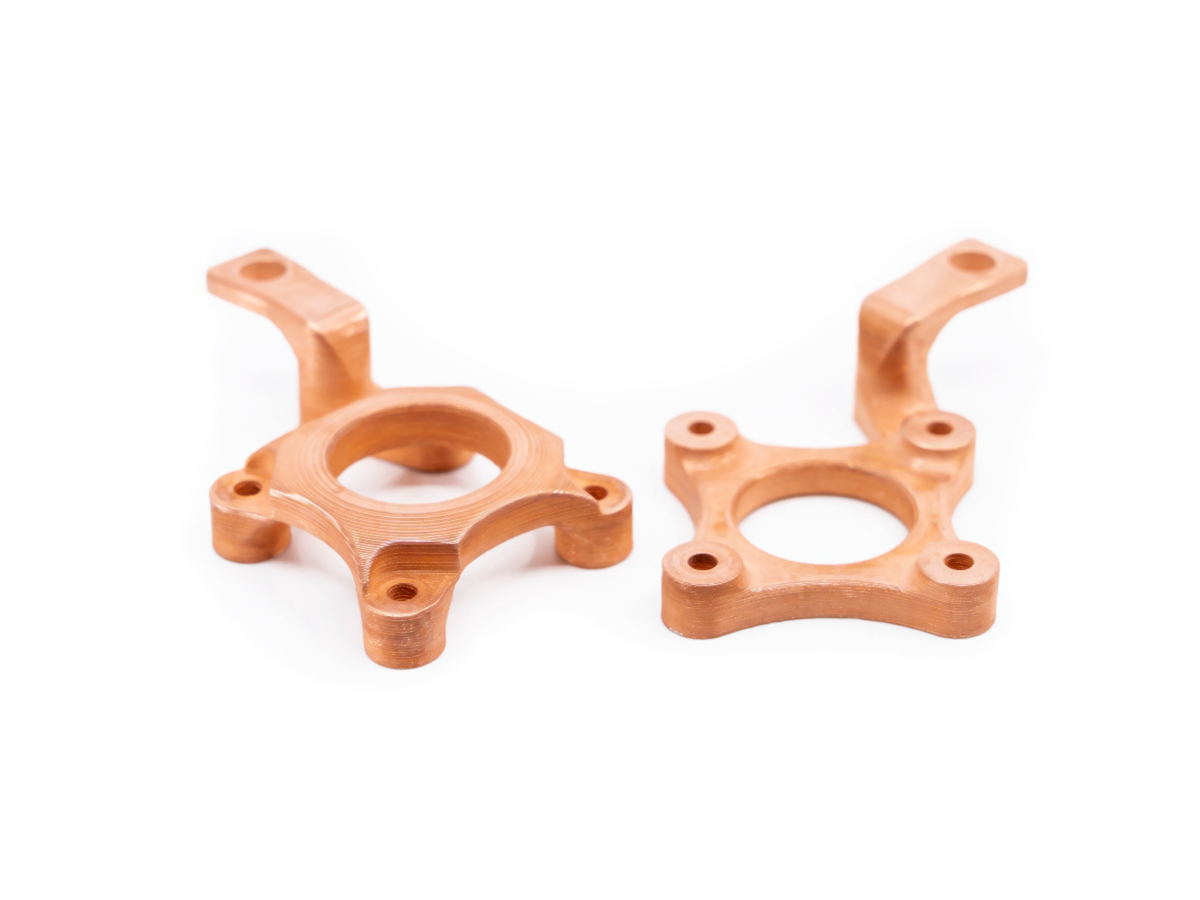Precision in Automation: High-Conductivity Copper Busbars for Robotics Components
Introduction
High-conductivity copper 3D printing is revolutionizing automation and robotics by enabling the production of precision busbars and power distribution components optimized for compact, high-performance robotic systems. Using advanced metal 3D printing technologies like Selective Laser Melting (SLM) and Direct Metal Laser Sintering (DMLS), premium copper alloys such as Copper C101 and Copper C110 deliver exceptional electrical conductivity and precise fitment for demanding robotic applications.
Compared to traditional subtractive machining or forming, copper 3D printing for robotics enables rapid production of complex, lightweight, highly customized busbars and conductive parts tailored to maximize energy efficiency and design compactness.
Applicable Material Matrix
Material | Electrical Conductivity (% IACS) | Thermal Conductivity (W/m·K) | Tensile Strength (MPa) | Purity (%) | Robotics Application Suitability |
|---|---|---|---|---|---|
≥99 | 390–400 | 220 | 99.99% | Ultra-high conductivity busbars | |
≥97 | 380–390 | 210 | 99.90% | General robotic connectors | |
~80 | 275–300 | 350 | Alloyed | High-temperature robotics systems | |
75–80 | 300–320 | 450 | Alloyed | High-strength electrical frames | |
≥99.95 | 390–400 | 200 | 99.95% | Specialized energy routing | |
25–30 | 200–220 | 600 | Alloyed | Corrosion-resistant robotic circuits |
Material Selection Guide
Copper C101: Offering ultra-high electrical conductivity (≥99% IACS) and excellent thermal transfer, C101 is perfect for custom busbars, high-efficiency current collectors, and energy routing components in robotic assemblies.
Copper C110: Combining high conductivity with mechanical durability, C110 is widely used for robotic power connectors, terminals, and flexible busbars.
GRCop-42: With enhanced strength and thermal stability, GRCop-42 is suitable for high-temperature robotics, such as robotic arms operating in extreme industrial environments.
CuCr1Zr: Providing a balance between conductivity and mechanical strength, CuCr1Zr is ideal for robotic system structural current paths and compact high-load frames.
Pure Copper: Ultra-high purity copper ensures minimum resistive losses, which are critical for sensitive or precision robotic components requiring stable electrical delivery.
CuNi2SiCr: Offering superior corrosion resistance and moderate conductivity, CuNi2SiCr is perfect for outdoor and marine robotic applications where environmental durability is key.
Process Performance Matrix
Attribute | Copper 3D Printing Performance |
|---|---|
Dimensional Accuracy | ±0.05 mm |
Density | >99.5% Theoretical Density |
Layer Thickness | 30–60 μm |
Surface Roughness (As-Printed) | Ra 5–12 μm |
Minimum Feature Size | 0.3–0.5 mm |
Process Selection Guide
Compact and Complex Geometries: 3D printing enables busbars with curved paths, embedded mounting features, and compact profiles that traditional fabrication cannot easily achieve.
Superior Electrical Conductivity: Materials like C101 and C110 ensure maximum energy efficiency in robotic motion, minimizing losses and overheating in high-speed or high-load operations.
Integrated Structural Strength: Copper alloys like CuCr1Zr allow electrical conductors also to be part of the load-bearing structure in compact robotic designs.
Rapid Prototyping and Customization: Quick design iterations enable tailored busbar layouts for custom robotic platforms without extensive retooling.
Case In-Depth Analysis: C101 3D Printed Custom Busbars for Compact Industrial Robots
A leading automation manufacturer needed lightweight, space-efficient busbars for a new generation of compact industrial robots. Using our copper 3D printing service with Copper C101, we produced precision busbars achieving conductivity ≥99% IACS, fine tolerance control within ±0.05 mm, and integrated mounting features. The custom-designed busbars reduced internal wiring space by 25% and improved power efficiency by 10%. Post-processing included CNC machining and surface polishing for optimal current flow and contact surface quality.
Industry Applications
Robotics and Automation
Power distribution busbars for robotic arms and manipulators.
Custom high-conductivity wiring frameworks for autonomous robots.
Current-routing structures for compact mobile robotics.
Industrial Control Systems
Copper busbars for automated factory equipment and high-speed actuators.
High-current connectors for robotic welding and assembly lines.
Aerospace Robotics and UAVs
Lightweight busbar systems for drones and aerospace robotic platforms requiring high energy efficiency and compact design.
Mainstream 3D Printing Technology Types for Copper Robotics Components
Selective Laser Melting (SLM): Best for producing ultra-dense, high-precision copper busbars.
Direct Metal Laser Sintering (DMLS): Ideal for complex routing paths and integrated structural-electrical designs.
Binder Jetting: Suitable for prototyping and batch production of moderately complex copper electrical components.
FAQs
Which copper materials are best suited for 3D printed busbars in robotics?
How does copper 3D printing improve power efficiency and design flexibility in robotic systems?
What post-processing methods enhance electrical conductivity for 3D printed copper busbars?
Can 3D printed copper busbars replace traditional wiring in compact robotic assemblies?
How does copper 3D printing accelerate prototyping and customization in automation systems?

